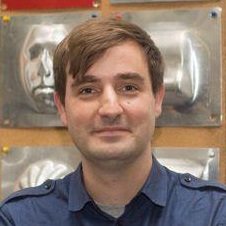Numerical and Experimental Advances in Innovative Manufacturing Processes
A special issue of Metals (ISSN 2075-4701). This special issue belongs to the section "Metal Casting, Forming and Heat Treatment".
Deadline for manuscript submissions: closed (31 December 2020) | Viewed by 38836
Special Issue Editors
Interests: green composites; cork; numerical simulation; biomechanics; metal forming
Special Issues, Collections and Topics in MDPI journals
Interests: metal forming; incremental sheet forming; fatigue and fracture mechanics; finite element analysis
Interests: friction stir welding; surface modification technologies; cold spray process
Special Issues, Collections and Topics in MDPI journals
Interests: material engineering; production engineering; production of additives; machining; surface treatment; laser and plasma welding; thermographic analysis; metal forming; friction; sintered carbides
Special Issues, Collections and Topics in MDPI journals
Interests: engineering design informatics; geometric algorithms; digital manufacturing processes; agile and automated production systems
Interests: laser forming; hydroforming; incremental forming; bulk metal forming; finite element simulation; friction stir welding process
Special Issues, Collections and Topics in MDPI journals
Special Issue Information
Dear Colleagues,
Processing methods and systems used in the manufacturing of metallic components are in constant evolution, either through optimizations of classical techniques, such as applying these to new alloys, or through the promotion of new techniques that change the form of, join, add, or remove materials. In this Special Issue, we aim to collect a set of contributions in the referred fields, which include, but are not limited to:
- Innovations and optimizations in classical processes: Rolling, forging, sheet forming, machining, and casting processes;
- Additive manufacturing and joining technologies;
- Laser forming, hydroforming, incremental forming, and other innovative forming technologies;
- Evolution of material properties and constitutive modeling (including multiscale methods) under new manufacturing conditions;
- Design and behavior of innovative equipment and tools.
Papers reporting new and unpublished advances either concerning numerical advances or experimental techniques on any aspect of these topics are welcomed.
Prof. Dr. Ricardo J. Alves de Sousa
Prof. Carpoforo Vallellano
Prof. Pierpaolo Carlone
Prof. Gilmar Batalha
Dr. Amar Kumar Behera
Dr. Mehdi Safari
Guest Editors
Manuscript Submission Information
Manuscripts should be submitted online at www.mdpi.com by registering and logging in to this website. Once you are registered, click here to go to the submission form. Manuscripts can be submitted until the deadline. All submissions that pass pre-check are peer-reviewed. Accepted papers will be published continuously in the journal (as soon as accepted) and will be listed together on the special issue website. Research articles, review articles as well as short communications are invited. For planned papers, a title and short abstract (about 100 words) can be sent to the Editorial Office for announcement on this website.
Submitted manuscripts should not have been published previously, nor be under consideration for publication elsewhere (except conference proceedings papers). All manuscripts are thoroughly refereed through a single-blind peer-review process. A guide for authors and other relevant information for submission of manuscripts is available on the Instructions for Authors page. Metals is an international peer-reviewed open access monthly journal published by MDPI.
Please visit the Instructions for Authors page before submitting a manuscript. The Article Processing Charge (APC) for publication in this open access journal is 2600 CHF (Swiss Francs). Submitted papers should be well formatted and use good English. Authors may use MDPI's English editing service prior to publication or during author revisions.
Keywords
- Manufacturing processes
- Experimental analysis
- Numerical simulation
- Metallic materials and their alloys
- Sheet metal forming
- Forging, rolling, and mass conformation
- Joining techniques
- Machining










